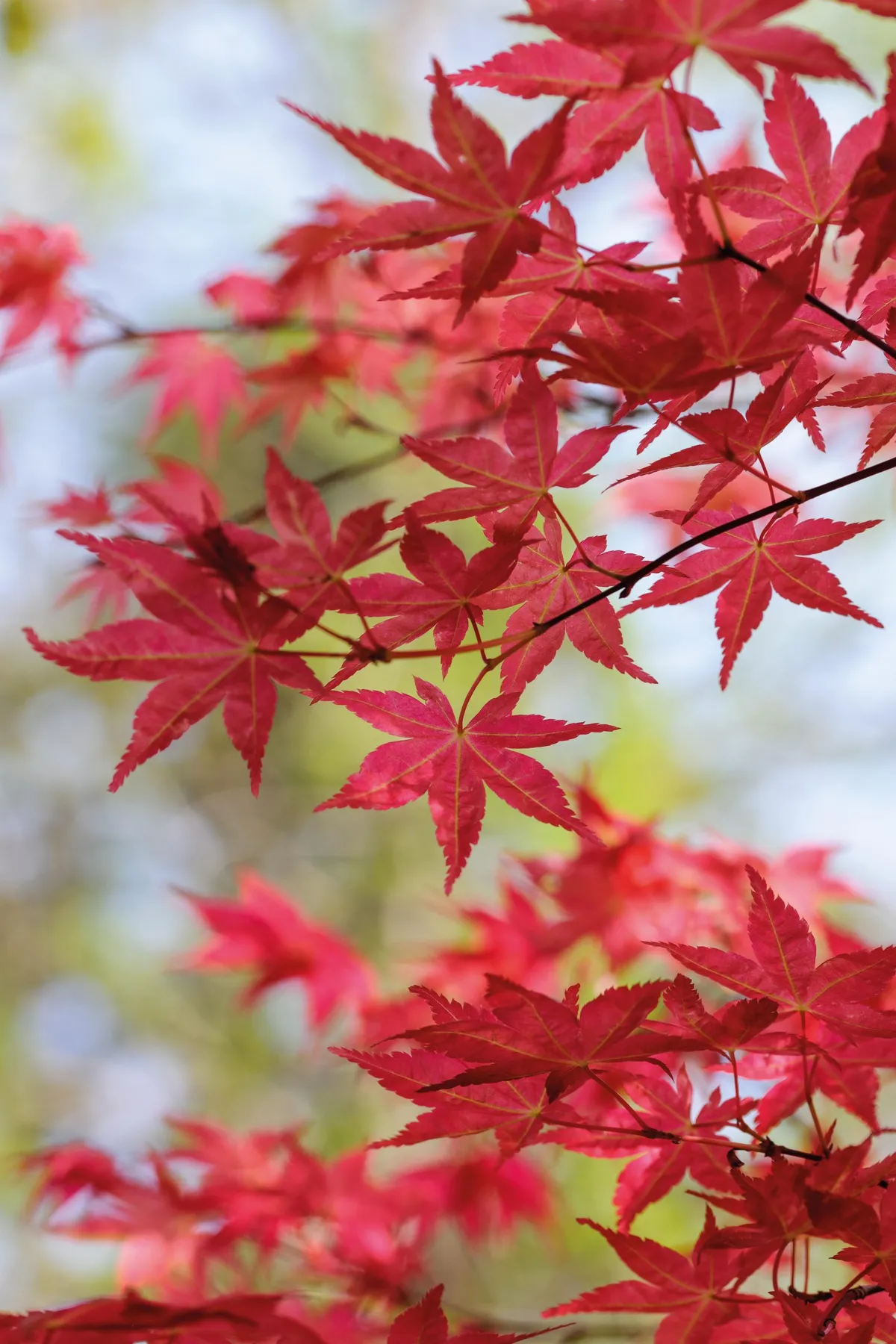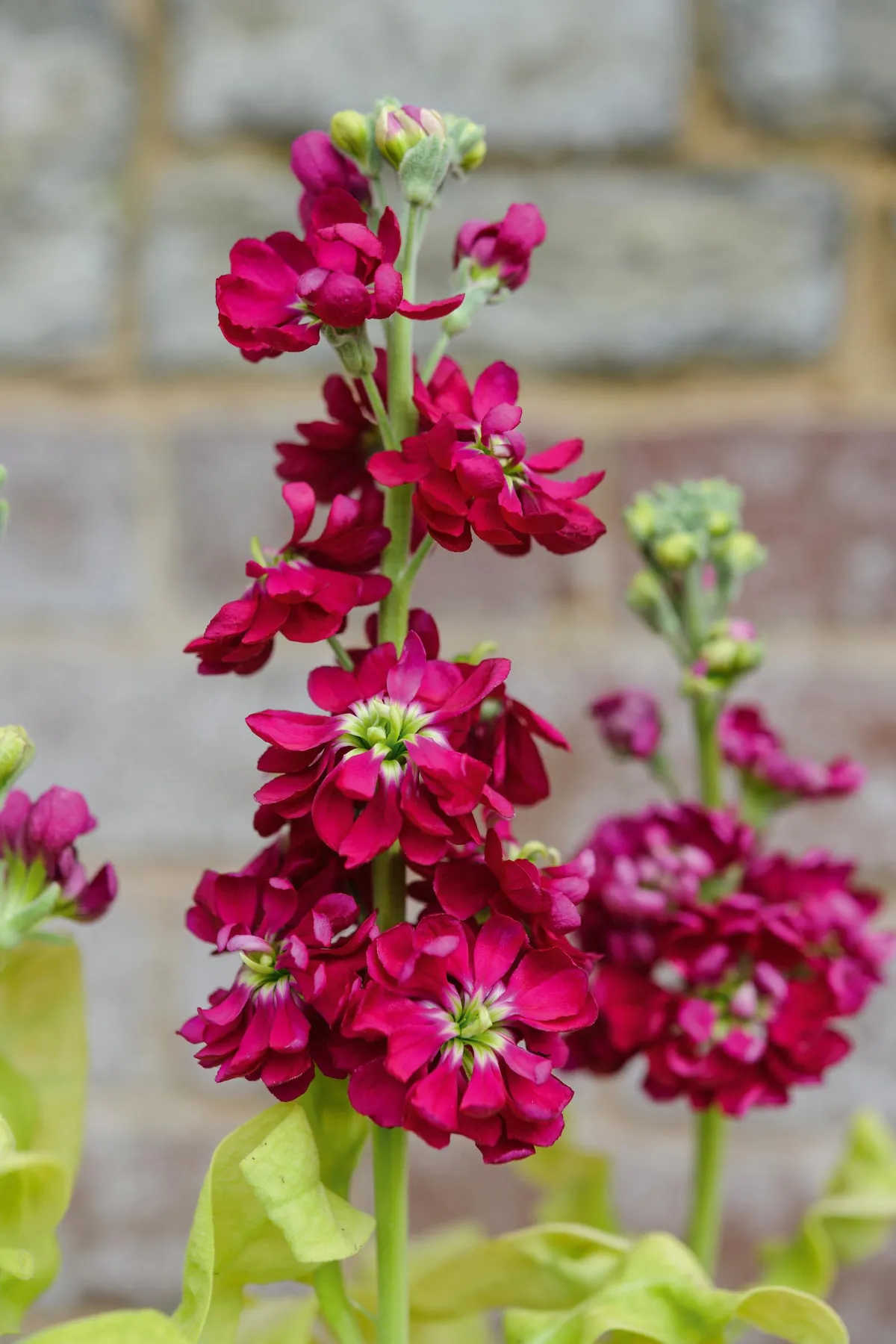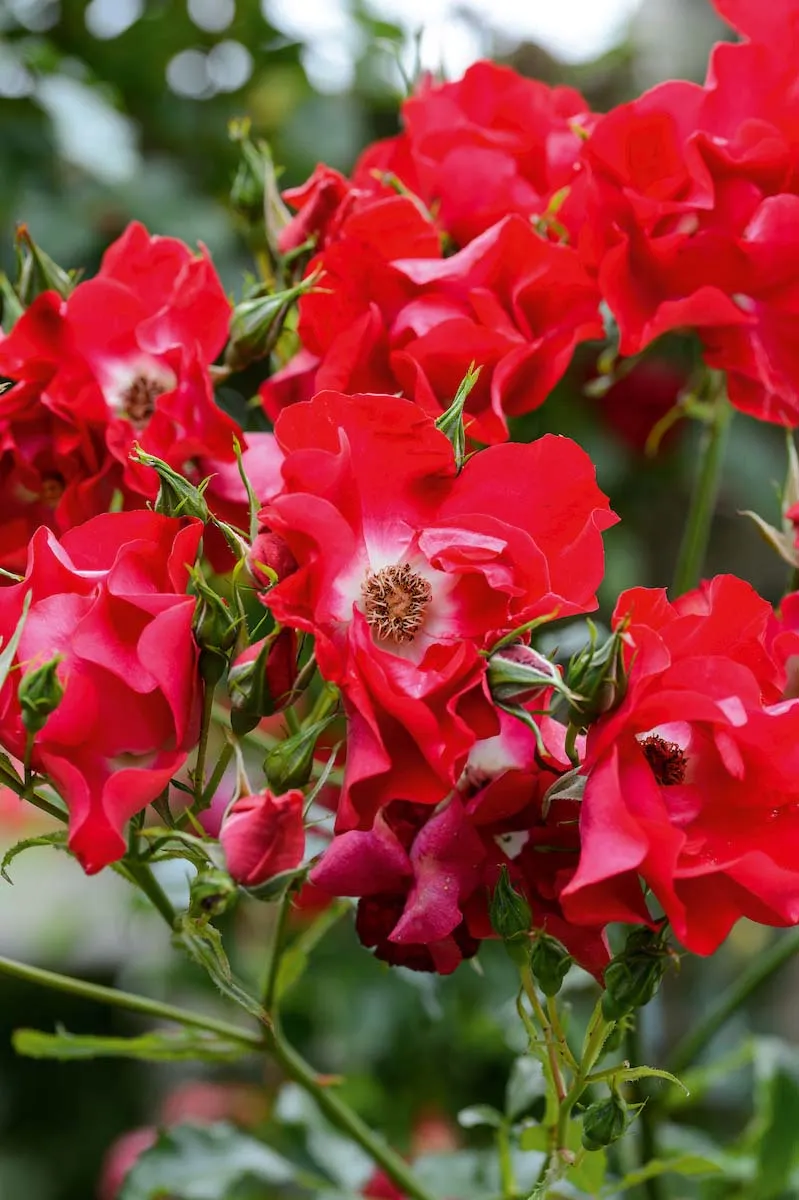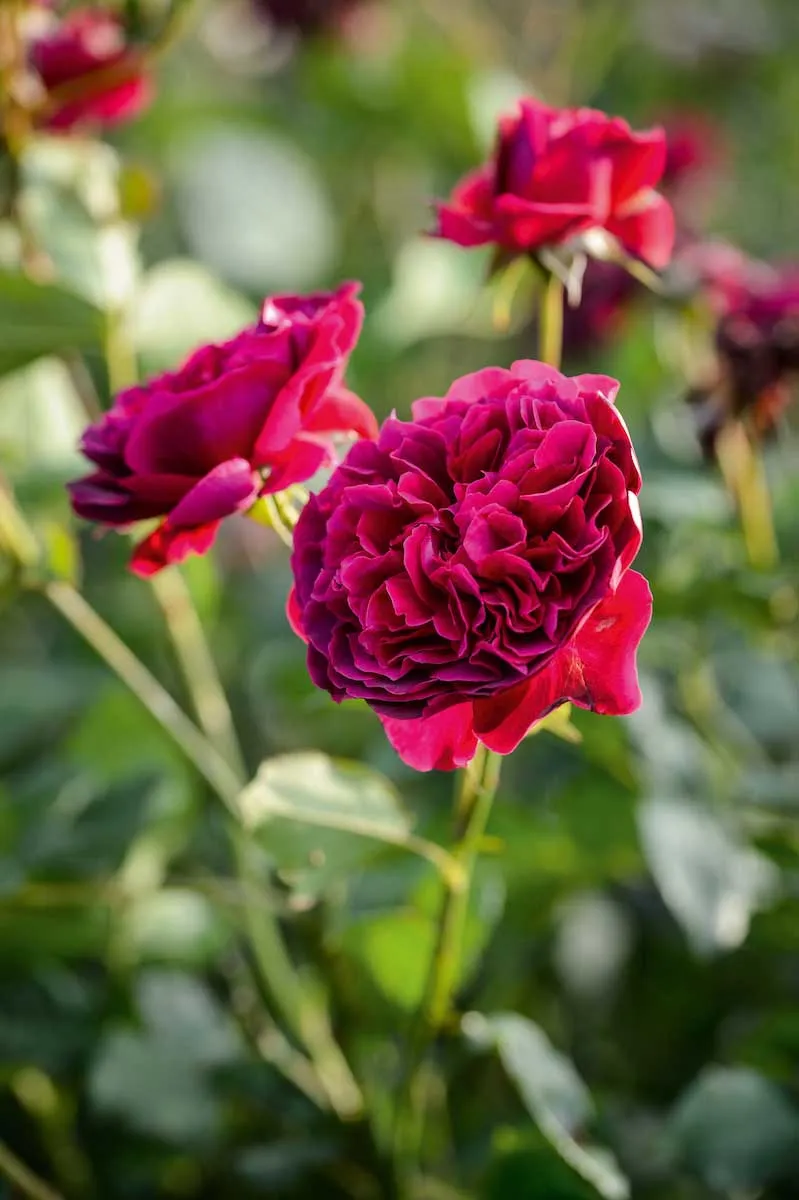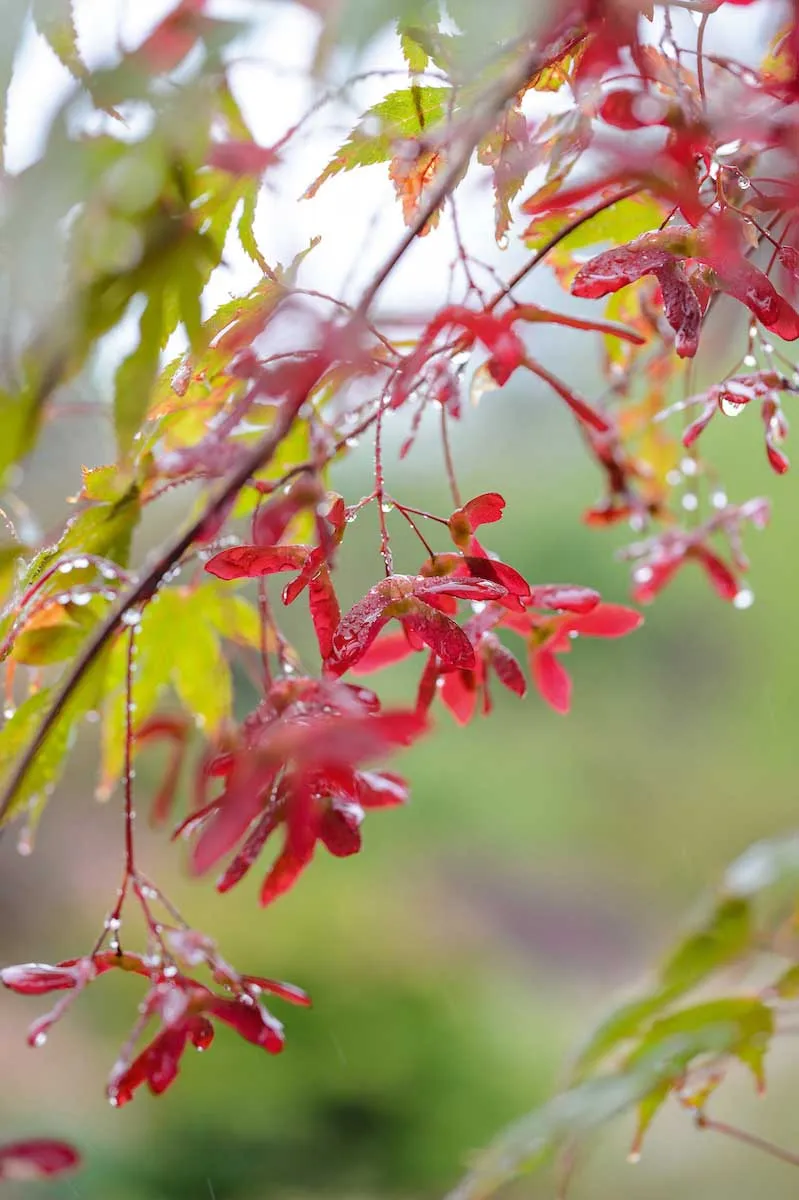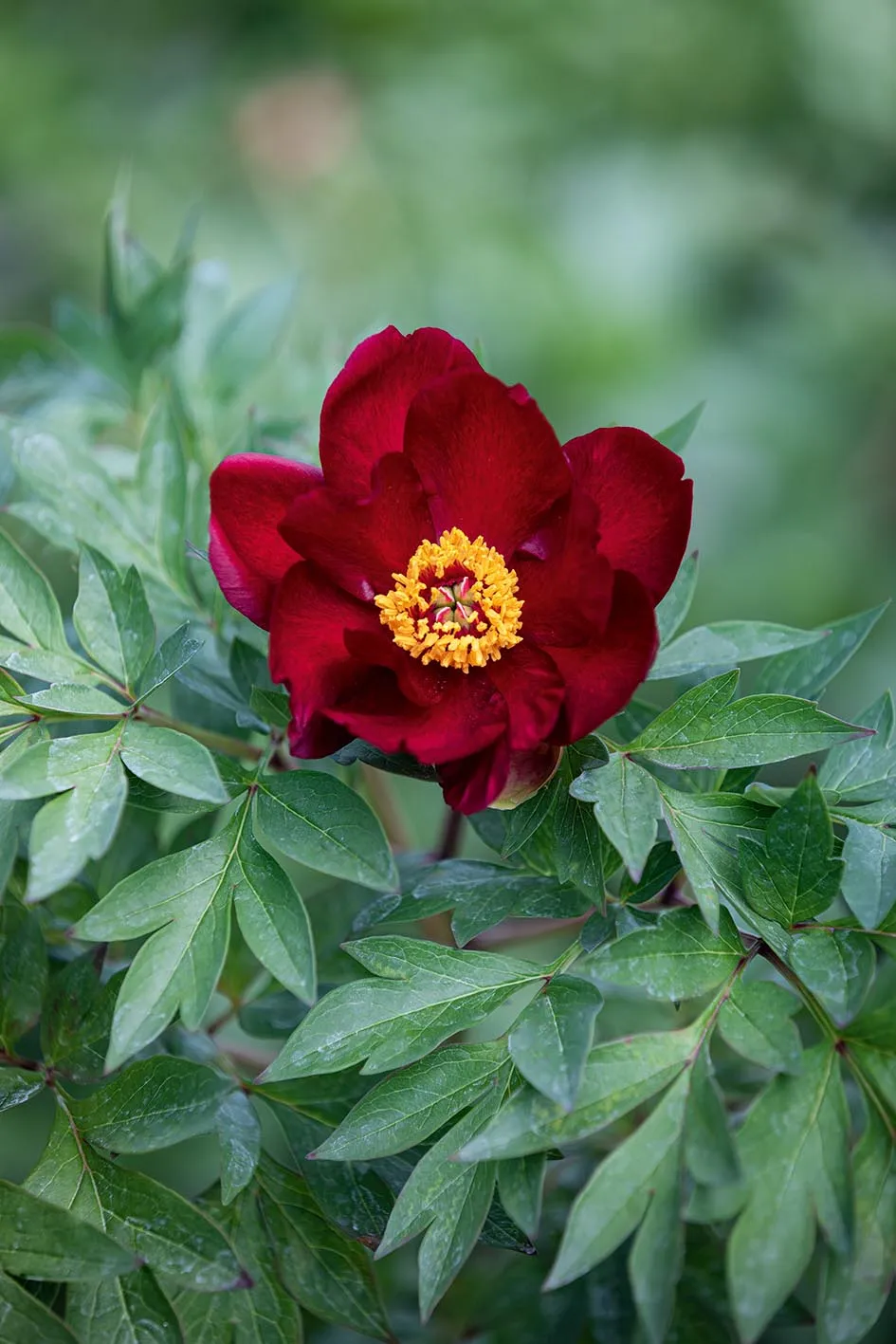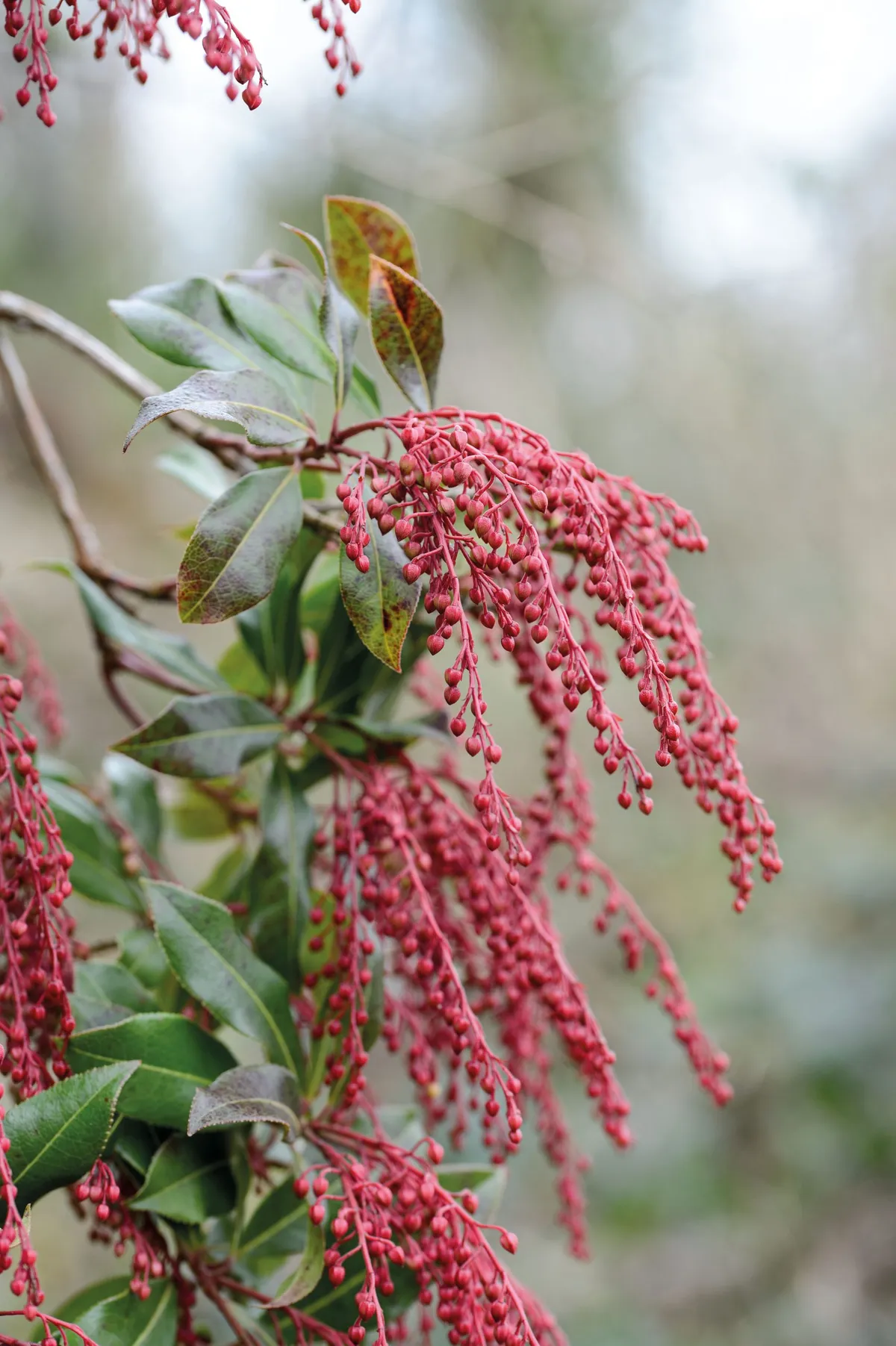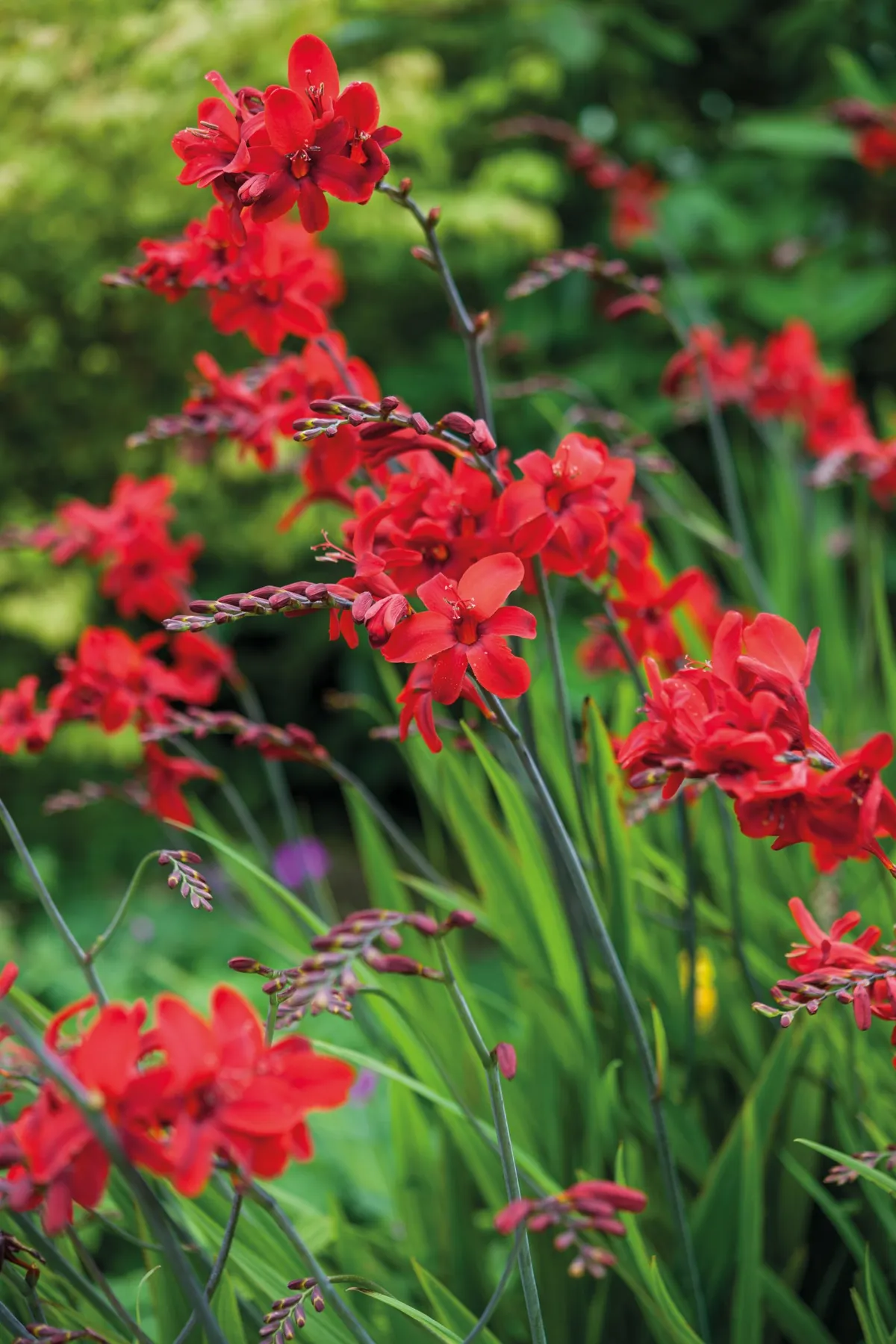Red flowers can bring vibrancy, colour, heat and excitement to a garden, but there's heaps of red plants - shrubs and trees - that are also worth considering if you are looking to plan your garden planting around red.
Nori and Sandra Pope famously wrote their book Colour by Design, based on their theories of colour planting and which detailed their incredible work at Hadspen House, now The Newt in Somerset. As Tania Compton said about the garden in her tribute to Nori Pope: ‘A seamless gradation from orange to red and plum to pink, fading into peach, was assembled against curving brick wall borders. The yellow borders made you feel the sun was shining on a grey day, the cool whites and steely blues excited and then calmed you down. From March to October every inch of space was packed with a succession of bulbs and annuals, perennials, shrubs, climbers and vegetables that built up to a tumultuous crescendo of colour and form. Running such a labour-intensive operation, where tulips and poppies were replaced by dahlias and cosmos, where plants were pinched out to delay flowering so they would chime with their neighbours, was like running a busy restaurant and conducting an orchestra all at the same time.’
Below are a selection of red flowers and plants that we, and many others, would recommend.
What about orange plants? Head to our piece on the best orange flowers for more.
Here's purple flowers for the garden
The best red flowers and plants for the garden
1
Rosa moyesii
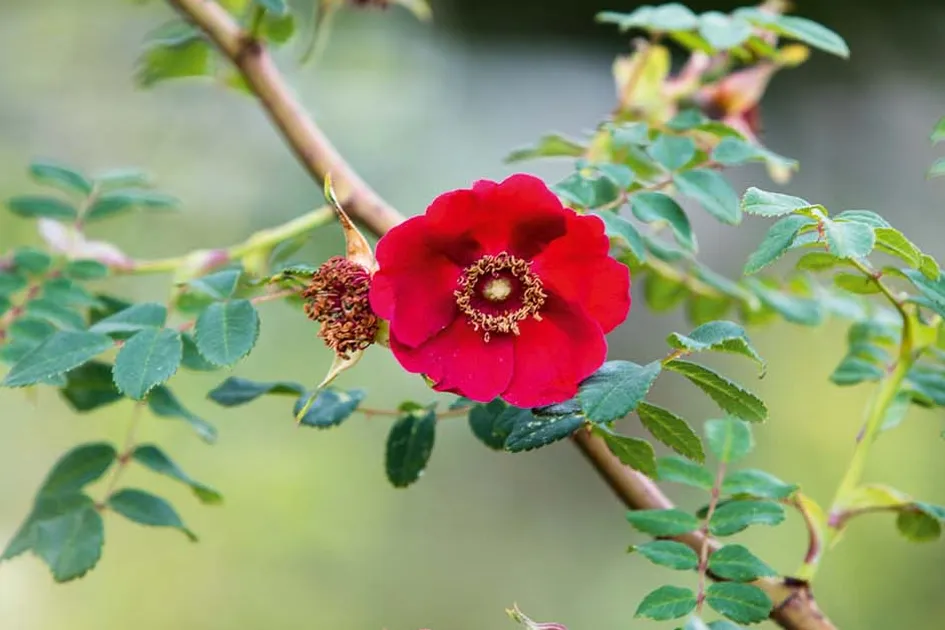
A plant with a rigid framework erupts into plentiful, modestly sized, deep-crimson blooms in early summer. Don’t pinch off the spent red flowers if you want to enjoy the flagon-shaped hips. 4m. RHS H6.
2
Cirsium rivulare ‘Atropurpureum’
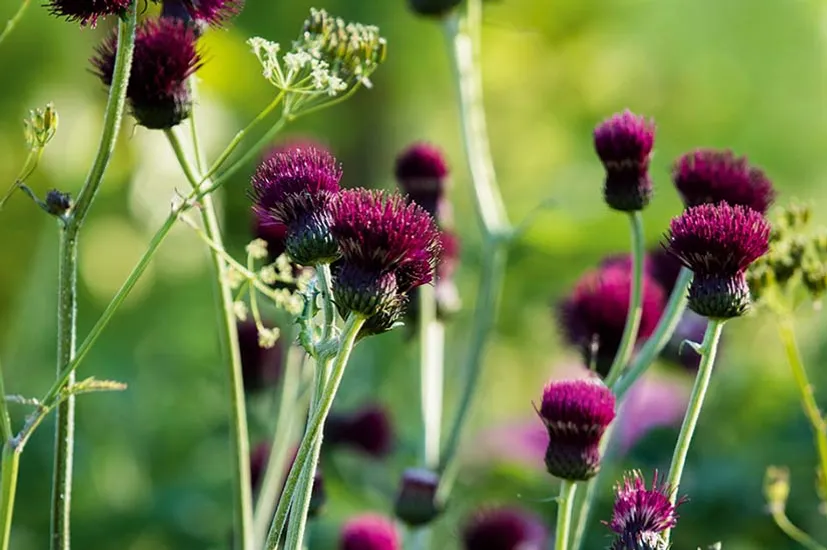
Dark red - wine-dark, even - pompoms on branching stems make this dark red-flowered form of the wild thistle a useful and semi-unpredictable, secondary ingredient in the garden. 1.25m. AGM. RHS H7.
3
Helianthemum x sulphureum ‘Cupreum’
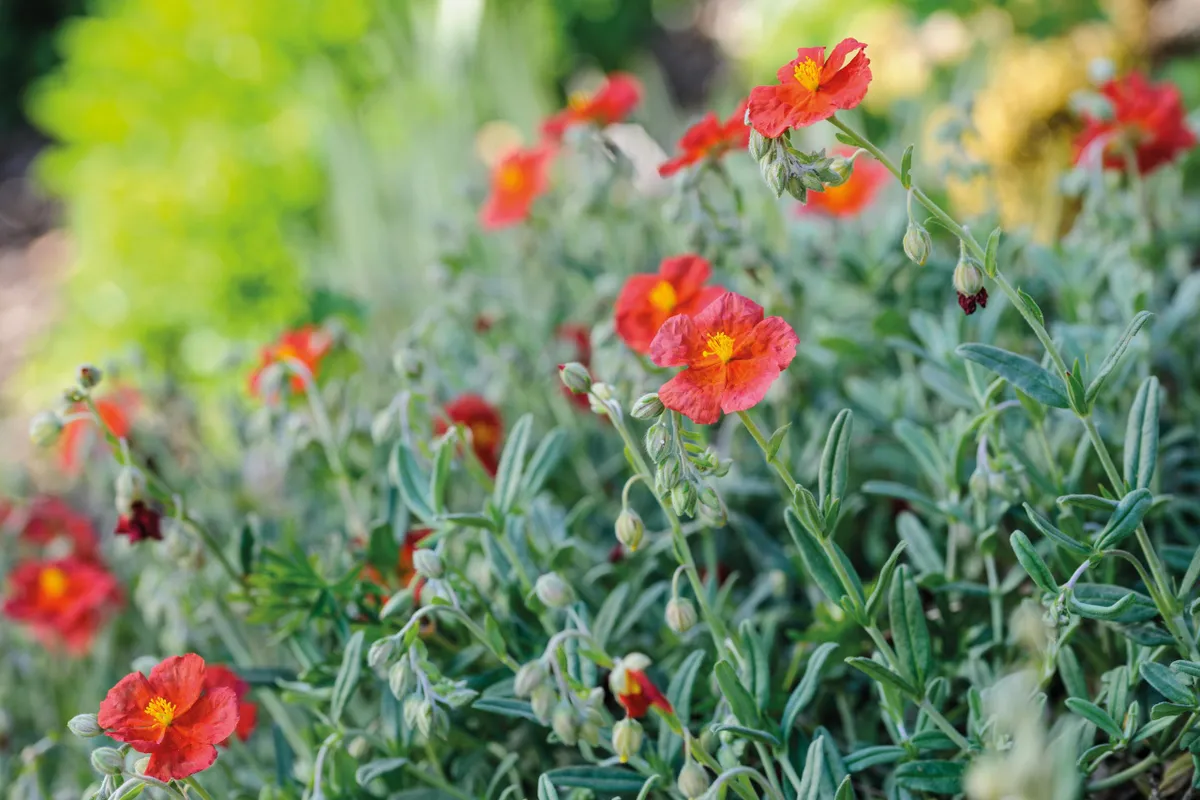
With bright-orange flowers that border on red, this alpine plant is at its happiest in a sun-baked position in a rockery, or at the front of a raised bed. 20cm. RHS H4.
4
Tropaeolum tricolor
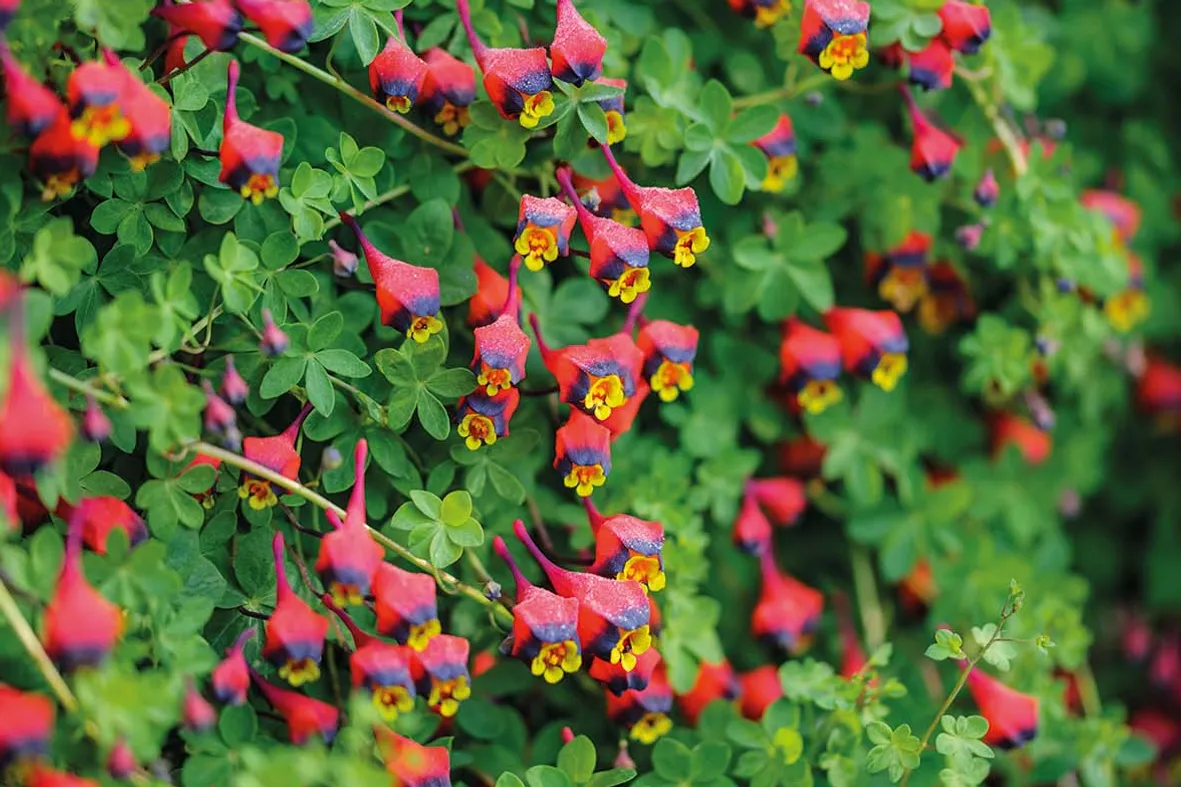
An alpine nasturtium from Chile that makes thin, climbing tendril growths in winter, then in spring bears masses of small, tricoloured flowers, mixing yellow, dark blue and light red. 1.3m. AGM. RHS H2, USDA 8a-10b.
5
Tulipa ‘Peppermintstick’
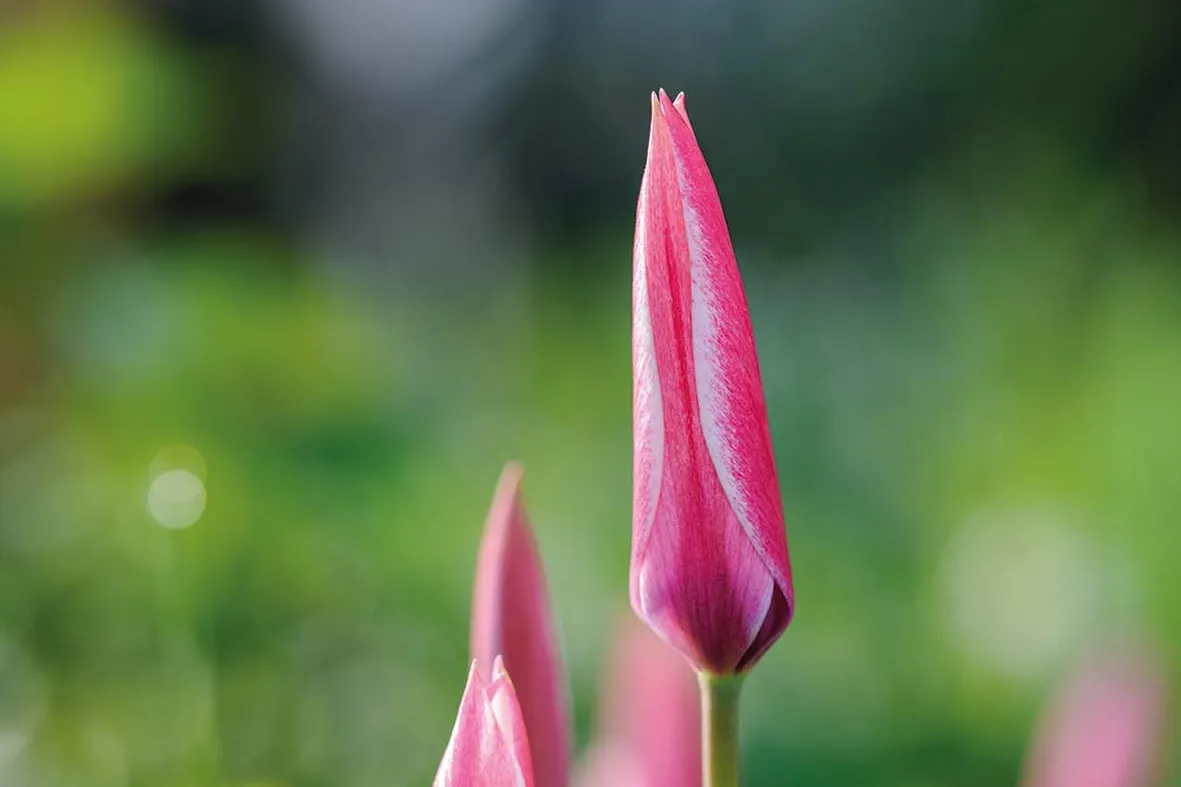
A good selection of a beautiful tulip species with slender, elegant, white and pink-to-red-backed flowers that open in the sunshine to reveal white, six-petaled stars. 30cm. RHS H5, USDA 3a-8b.
6
Pieris formosa var. forrestii ‘Jermyns’
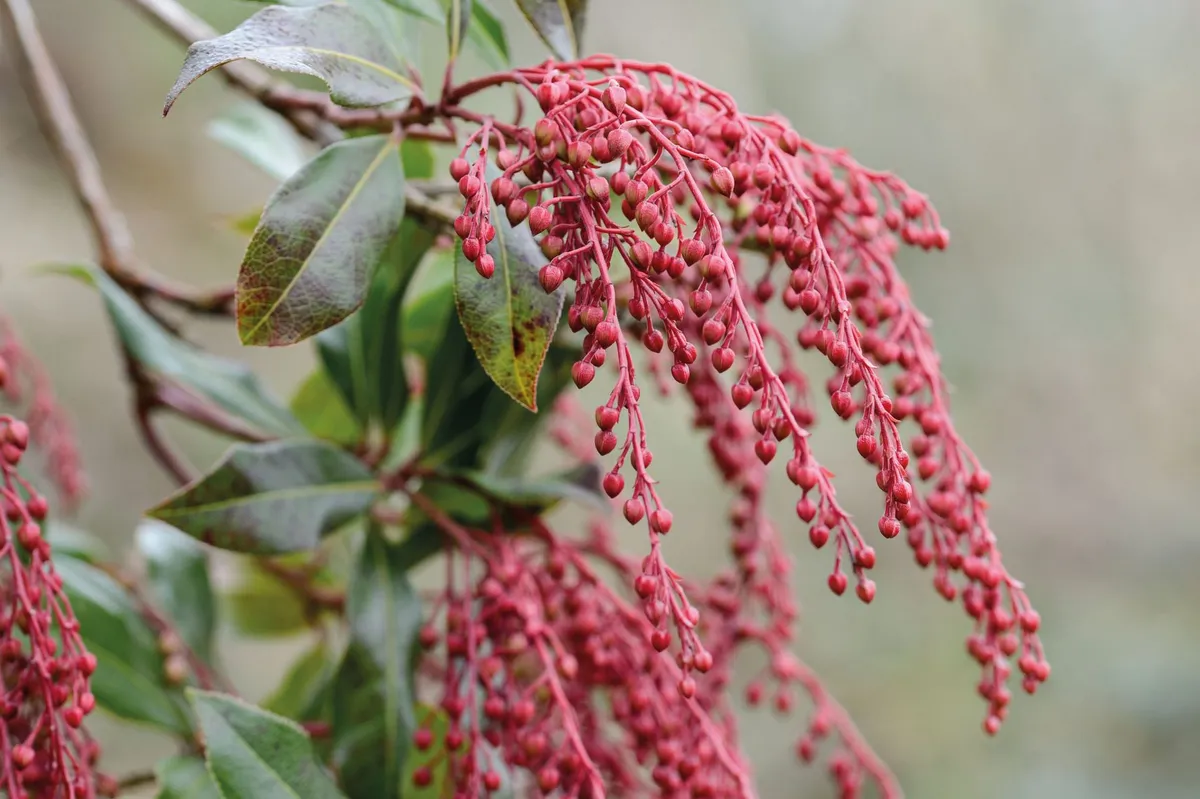
Chosen by Keith Wiley: One of my top ten shrubs for winter effect, although you’ll need a non-limey soil to grow it. Its red flower buds are very good for flower arranging, and the colder the weather the more intense the red colour of these buds becomes. From these, white, heather-like, bell-shaped flowers open in spring, and these are best removed after flowering to improve flowering the following year. If you forget it may flower only every other year. Striking purple-red young foliage will follow if frosts permit. Height Up to 3m. Origin Garden selection (species native to southwest Asia and Himalayas). Conditions Ericaceous soil; sun or part shade. Hardiness RHS H4, USDA 5a-8b. Season of interest Spring/early summer for new foliage; all winter for flowerbuds.
7
Acer palmatum ‘Corallinum’
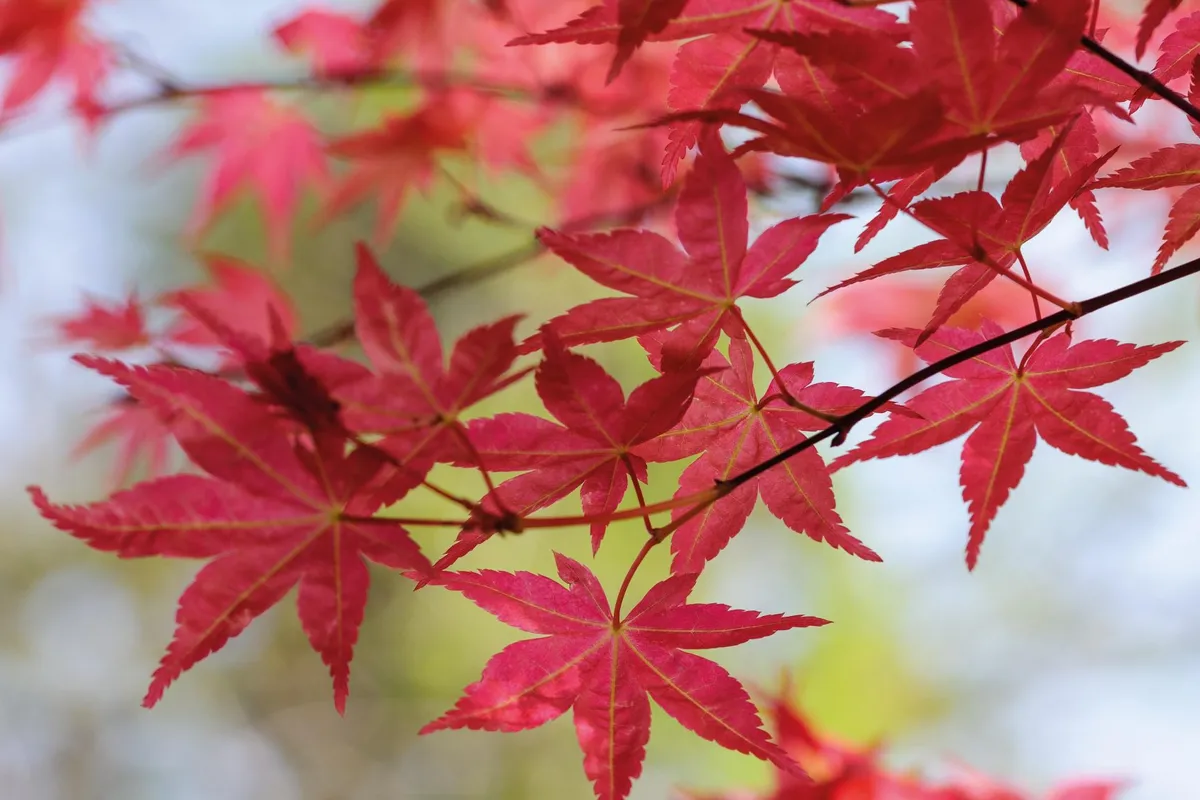
Chosen by Keith Wiley: Japanese maples are such good year-round plants. Nearly all have graceful winter form with the delicate tracery of their naked branches and are renowned for their autumn colour, but it is for the spring colour - a vibrant red - of the new foliage that I value them. For this there is none more spectacular than ‘Corallinum’, which for nearly six weeks literally puts even the massed flowering of the evergreen azaleas in the shade. Sadly, there is no autumn colour worth mentioning. AGM. Height 2m. Origin Garden, bred at Hillier’s Nursery, in 1910 (species Japan). Conditions Well-drained soil; full sun to part shade. Hardiness RHS H6, USDA 5b-9b. Season of interest Spring to early summer for rich colour.
8
Matthiola incana ‘lucinda red’
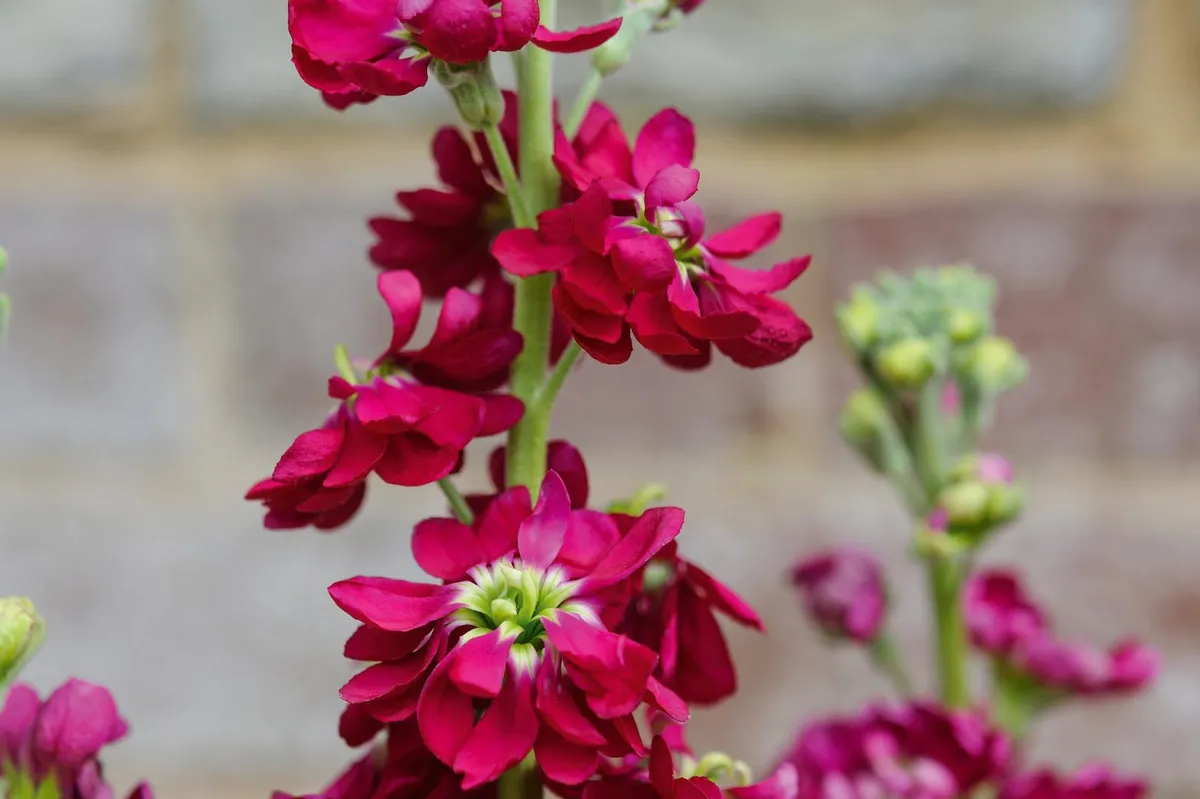
Chosen by Tom Brown: In the right conditions, you can have stocks in glorious red flower three months after sowing their seed. Once they’ve germinated, it is possible to separate the single and double-flowering plants, depending on the colour of the young leaves: the lime-green seedlings will provide double flowers; the darker ones will be single. Both have merit but I prefer to grow like with like. Ensure you feed initially with a nitrogen-based liquid feed to achieve good stem length; once budded switch to a higher potash mix. Soil needs to be moist and fertile for long stems. Height 50cm. Origin Southern and western Europe. Conditions Free-draining soil; full sun. Hardiness RHS H4, USDA 7a-10b. Season March to October (flowering three months after sowing).
9
Rosa ‘Dortmund’
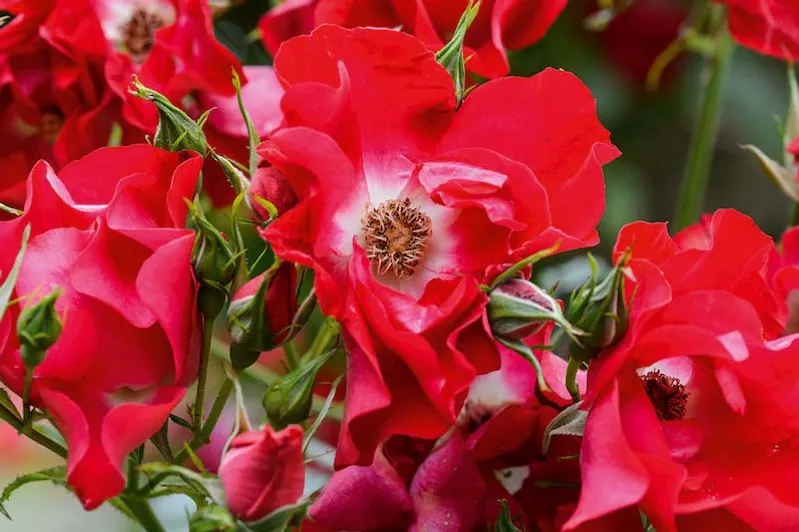
Chosen by Keith Wiley: A climbing red rose that offers glossy green foliage and clusters of white-centred, red flowers throughout summer and into autumn, which are then followed by attractive orange hips. For 40 years this rose has unfailingly delivered clean foliage – without any resort to chemicals – and has produced masses of flowers for us in a part of the country that has a very high rainfall, in which most roses refuse to grow in for more than a year or two without regular spraying. It has thorns, so the annual tidy up and tying in tends to be a painful process, but it is so worth it. AGM. Height 3m. Origin Garden origin. Conditions Moist but well-drained soil; full sun. Hardiness RHS H5, USDA 4a-10b. Season of interest All summer.
10
Rodgersia pinnata ‘Buckland Beauty’
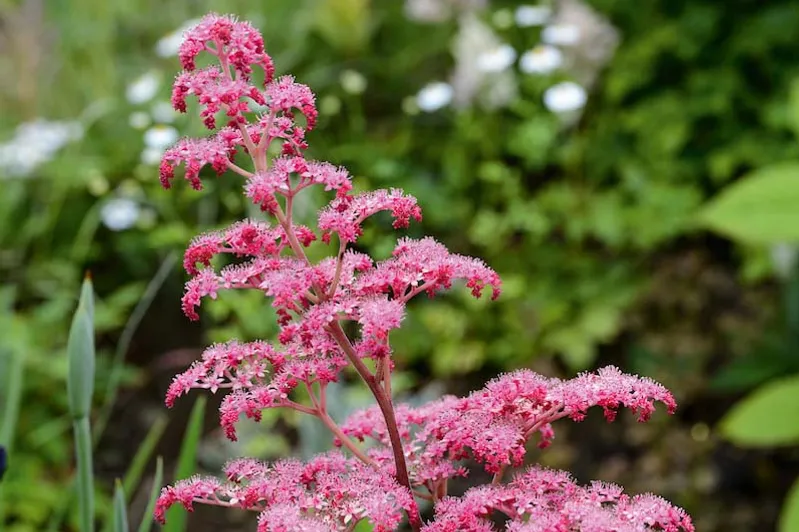
Chosen by Keith Wiley: A dark-pink seedling we raised from Rosa pinnata ‘Superba’ while at the Garden House. In the wild, rodgersias often grow on stream banks and like a moisture-retentive soil, without being waterlogged. After flowering the flowerheads in this cultivar turn dark red, and are excellent for use in dried flower arrangements. The handsome crinkled foliage appears late in the spring, with the flowering stems pushing up first, so they are vulnerable at this time to late spring frosts. This late leafing means it is possible to grow early spring bulbs among the roots. AGM. Height 1m. Origin Garden origin, species from China. Conditions Moist but well-drained soil in full sun/part shade. Hardiness RHS H4, USDA 3a-8b. Season of interest All summer.
11
Crocosmia ‘Hellfire’
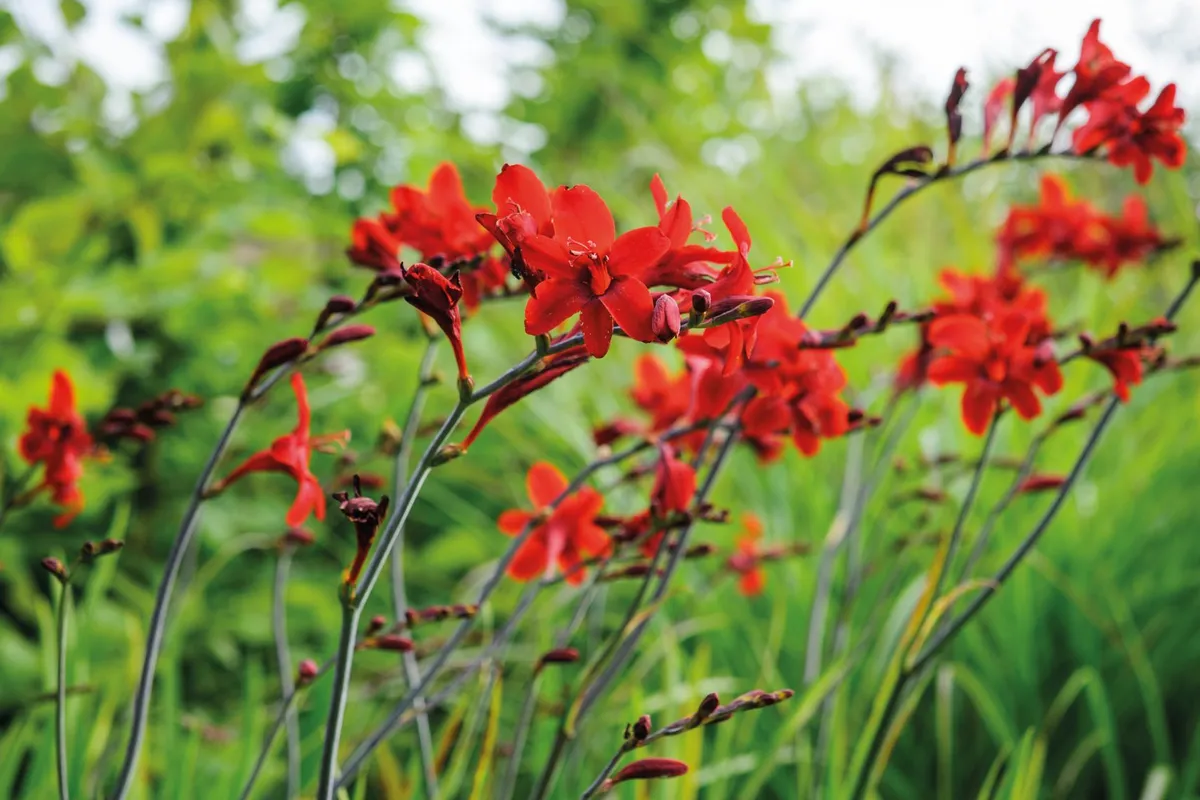
A huge improvement on Crocosmia ‘Lucifer’, with larger flowers that are pure, darkest-red. This perennial also doesn’t spread as aggressively. Its orange-red flowers stay for weeks and is happy in moisture retentive soils, in both full sun or part shade. Grows to 60-75cm. AGM. RHS H5, USDA 5a-9b.
12
Rosa William Shakespeare (= ‘Ausroyal’)
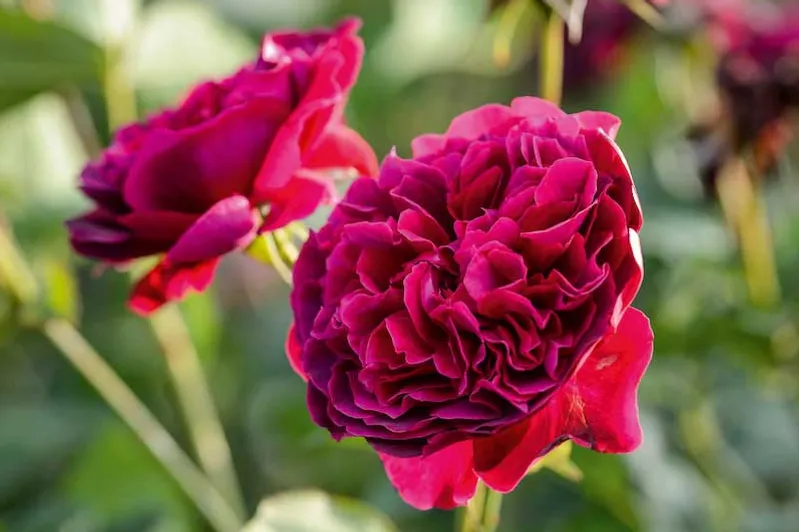
Large, double crimson red blooms that are strongly scented. May need assistance as it is susceptible to disease. 1.5m. RHS H6, USDA 4a-8b.
13
Papaver somniferum ‘Lauren’s Grape’
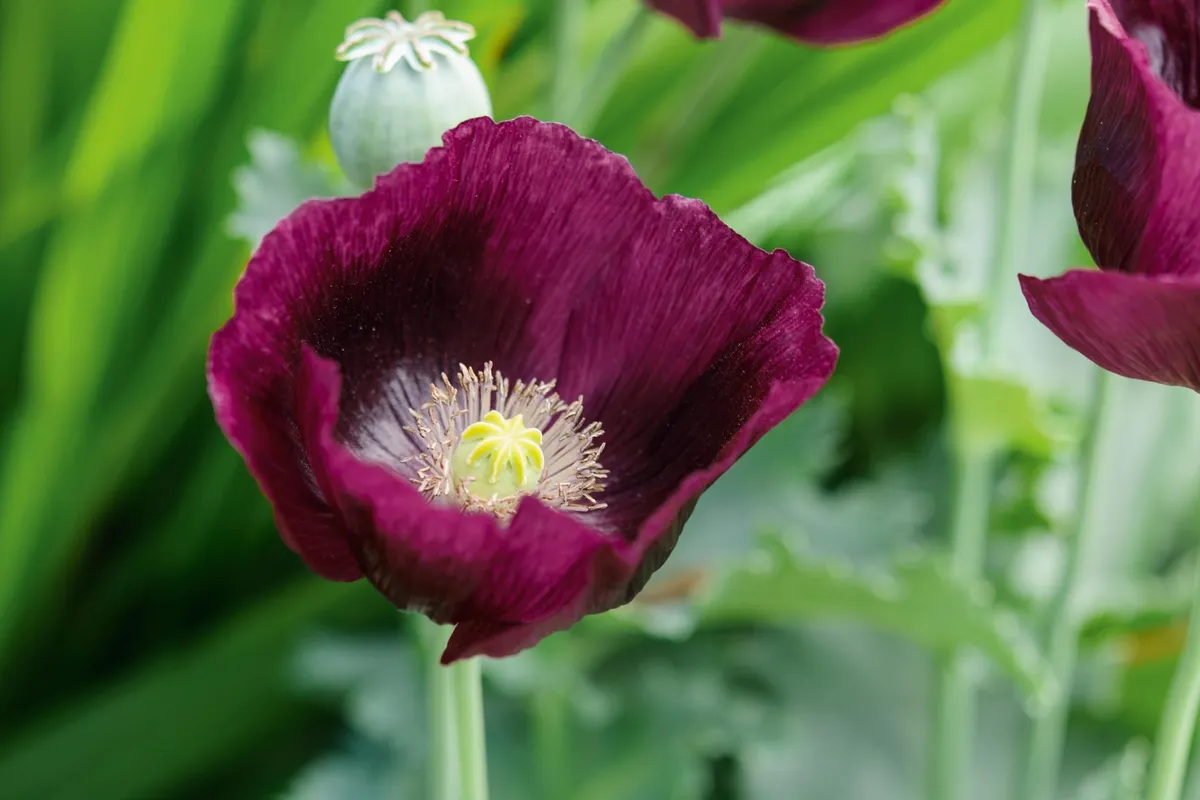
A dark plum-coloured opium poppy which is a deep purple shade of red. Will come true from seed if not polluted with inferior forms. 1.5m. RHS H5.
14
Rosa ‘De Resht’
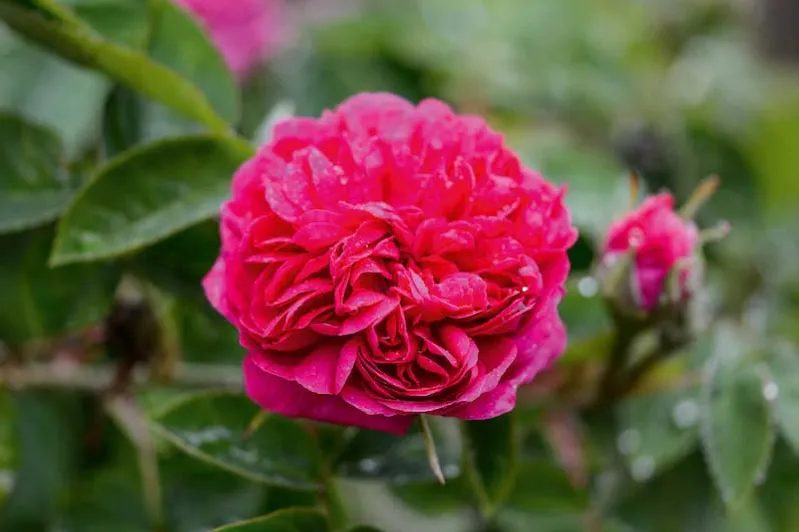
Chosen by Keith Wiley: I don’t expect any sympathy from those of you gardening on alkaline soils in drier parts of the country, but roses are generally not good in high rainfall areas. However, this shrub rose, an older cultivar, is an exception to this rule and an utter delight. It flowers all summer long and well into early autumn with highly scented, red double flowers. It makes a compact, well-shaped bush with lush foliage, remarkably tolerant of blackspot and seems just as happy in a semi-shaded spot as in full sun. It was also my wife’s favourite rose, and so it has now become my favourite too. AGM. Height 1-1.5m. Origin Garden origin. Conditions Well-drained, soil; full sun. Hardiness RHS H7, USDA 4a-9b. Season of interest All summer.
15
Acer palmatum ‘Matsukaze’

Chosen by Keith Wiley: This Japanese maple is truly multi-seasonal in its attributes. Its leaves emerge in spring a rich, bronze to red colour that very gradually fades to green by mid-summer before exiting in the autumn in glorious scarlet before they fall. These colour changes are by their very nature short-lived, so the display of crimson-red seedheads, which appear soon after leaf emergence and can last for months, if frosts haven’t spoilt the flowers, is eye-catching and very welcome. It is very similar to Acer palmatum ‘Chitose-yama’. Height 2-3m (3-4m wide). Origin Garden origin (species Japan). Conditions Well-drained, good soil; full sun to part shade. Hardiness RHS H5, USDA 5a-9b. Season of interest Year round; spring to summer for seeds.
16
Paeonia ‘Sonoma Velvet Ruby’
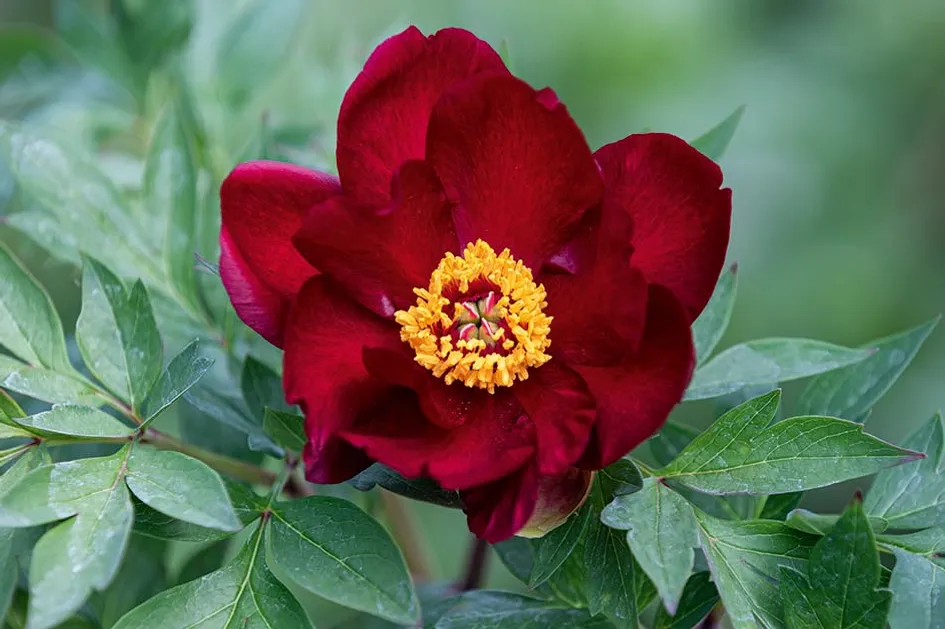
Offers large, single, deep wine-red flowers and finely cut green foliage that turns red in autumn. Mid-season. 75cm.
